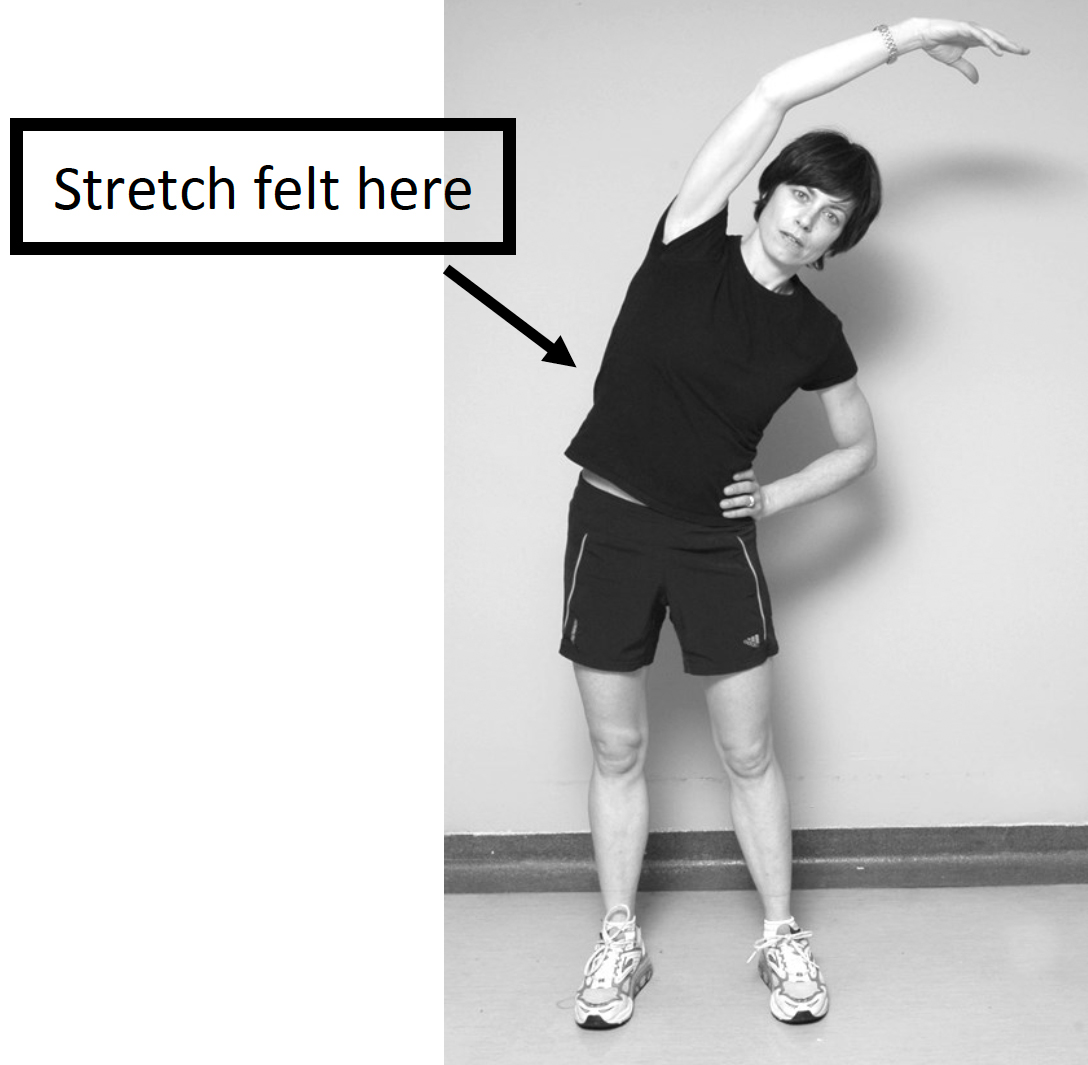Strengthening and progression exercises
- 3-4 times per week (every other day)
- Start with 1 set of 10-15 repetitions
- Progress gradually to 3 sets of 10-15 repetitions, take a 1-2 minute break between sets
- Think slow and controlled movements, no need to hold the position
- Move on to an exercise labeled “progression” when you can easily complete 3 sets of 10-15 repetitions
- Repeat exercises on your other leg
Tips:
- It is normal for muscles to feel sore or even shaky when starting a new exercise
- Joint pain is not normal. Pain, unlike soreness, is an indicator that you may be overdoing it with your exercises. Rest for 1-2 days and then start exercising again slowly
- Gradually increase your activity level
- Walking DOES NOT take the place of your exercises
- Continue with these strengthening exercises for at least the first year after your surgery
7. Bridge progression
- Lying on back, knees bent
- Squeeze buttocks
- Lift buttocks off bed

Progression level 1
- Lift buttocks off the bed with both feet on bed
- Once you are up, lift non-operated slightly off the bed
- Keep non-operated leg up as you lower buttocks back to the bed
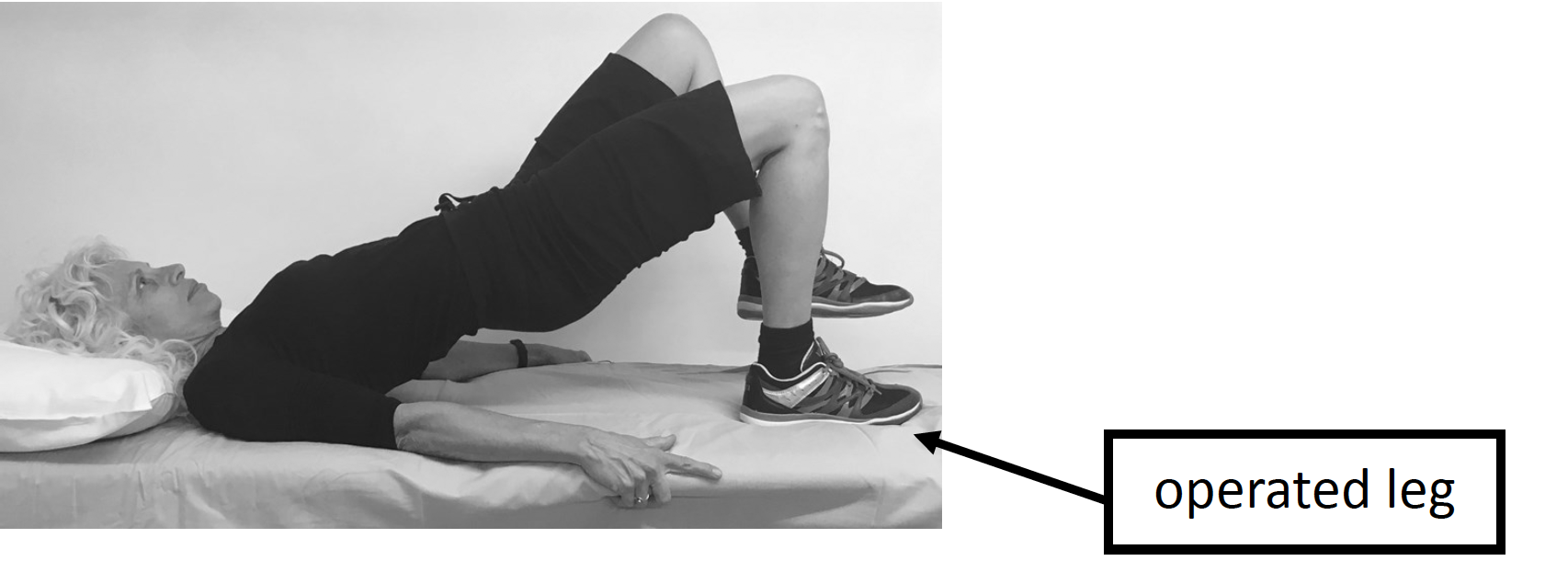
Progression level 2
- Raise and lower buttocks with operated leg only on bed
- Try straightening your non-operated leg while keeping it off the bed slightly

8. Clam shell
- Lie on your non-operated side with your hips and knees slightly bent
- Keep your feet together
- Open your knees as much as you can without letting your top hip roll backwards
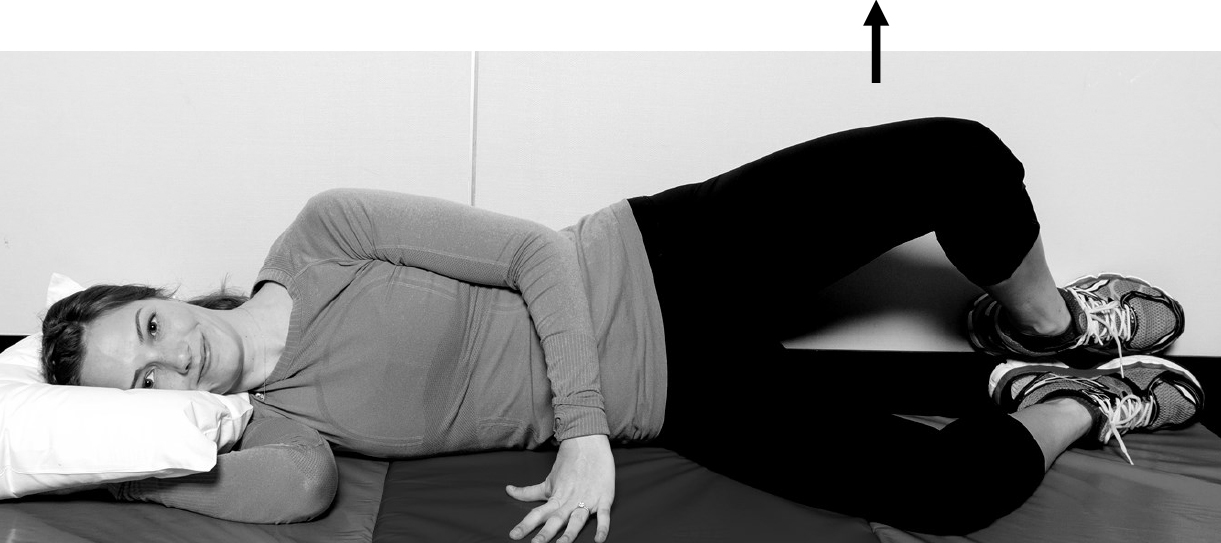
Note: If you are having difficulty opening your knees or preventing your hip from rolling then push your feet against a wall or headboard as you lift your top knee
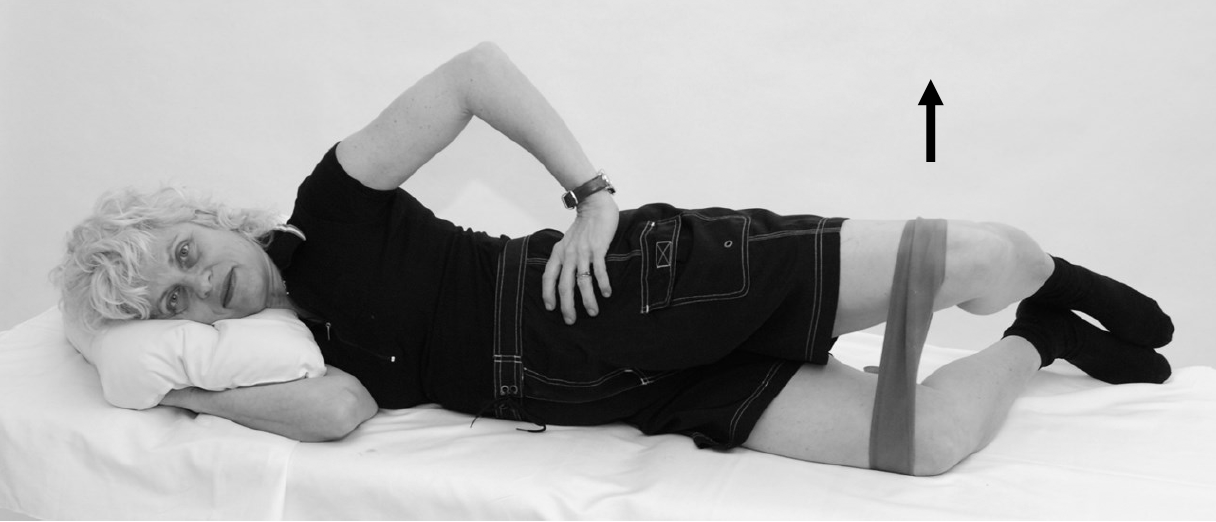
Progression: Tie a TheraBand® around your lower thighs, just above your knees. You may want to start off with a light resistance TheraBand®
9. Hip flexor strengthening
- In sitting, lift your operated leg up so that your foot is off the floor
- Try to avoid leaning back
- Do not let your knee turn out to the side
Progression: push down with your hands to apply resistances

10. Standing hip abduction progression
- Hold onto a counter for balance
- Lift your operated leg out to the side while standing tall
- Keep your hips level and upper body straight
- Do not hike your hip. Try to keep your foot slightly off the floor
- Keep your toes pointing forward
- Alternate legs
Progression: Tie a TheraBand® around your lower thighs
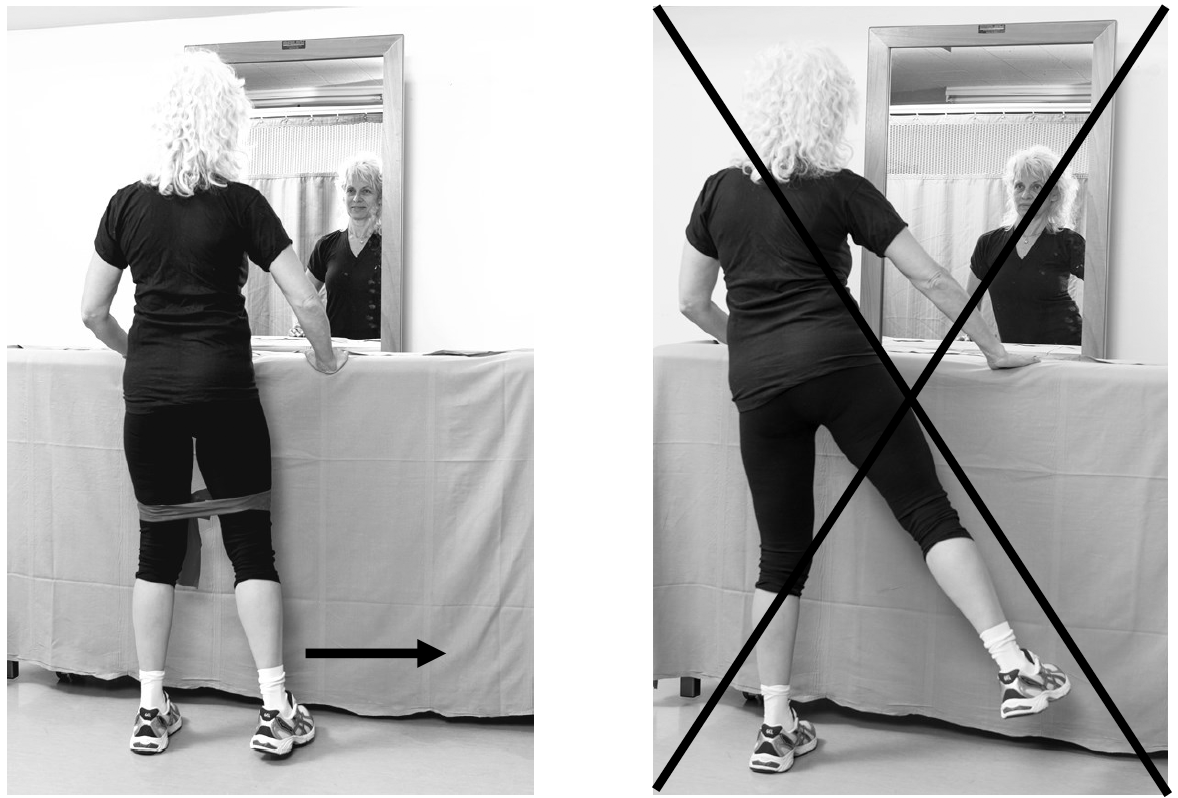
11. Squat progression
- Stand in front of a chair/sink and keep equal weight through both feet
- Keep your toes pointing forwards
- Bend your knees and stick your buttocks out
- Lower your buttocks down slowly and with control, using hand support if needed
- If using a chair, lower all the way down into sitting
- Do not allow your knees to go ahead of your toes
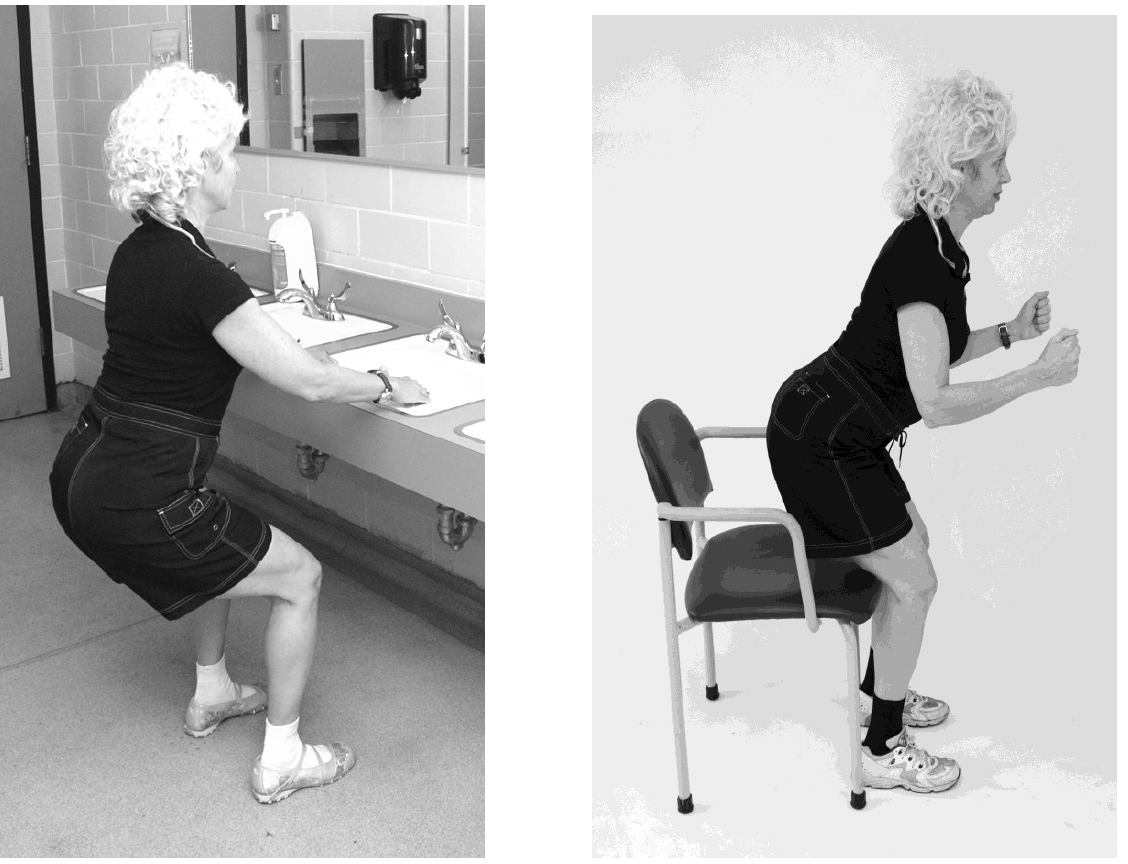
Progression level 1: Tie a TheraBand® just above your knees. Press thighs apart against tension of TheraBand® while doing the chair squat exercise
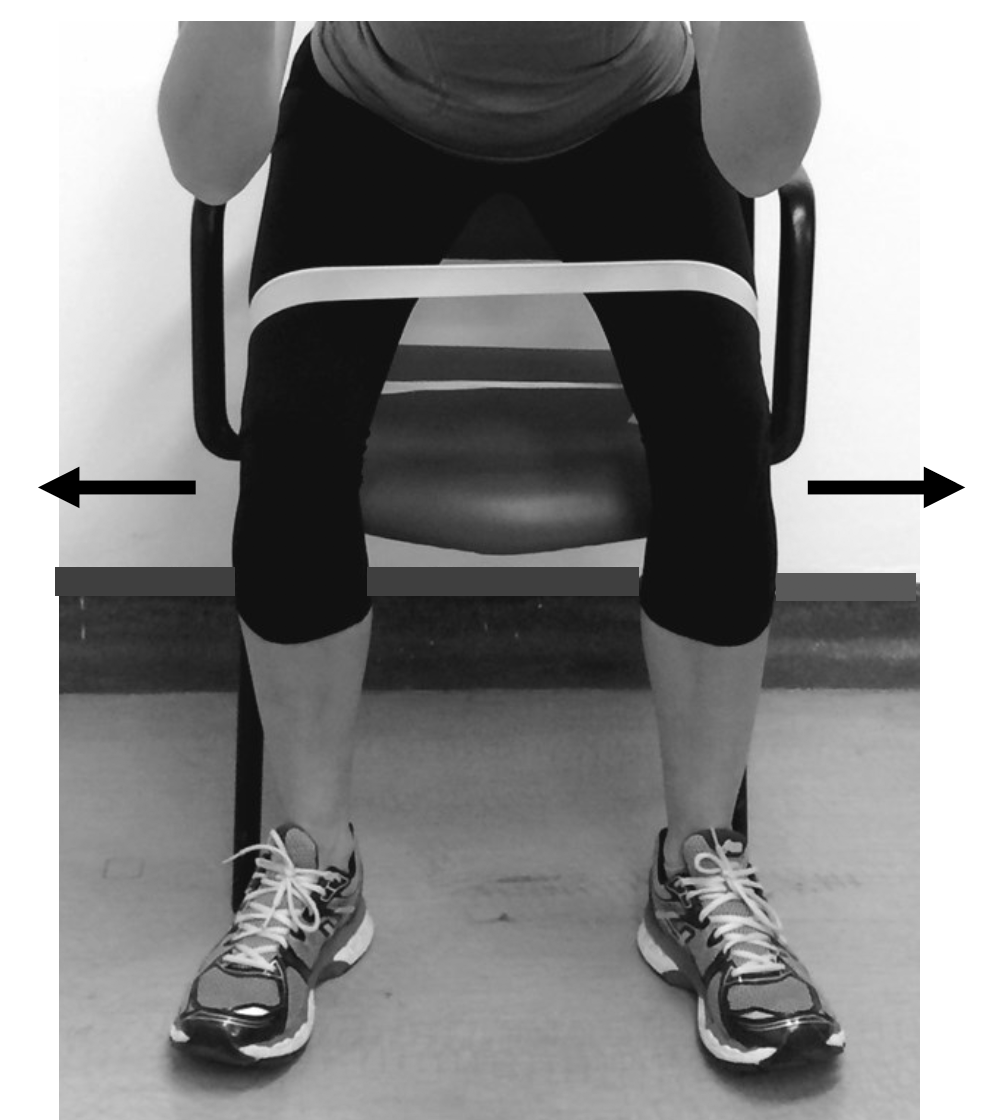
Progression level 2: Alternate single leg squat between operated and non-operated leg, using hand support if needed
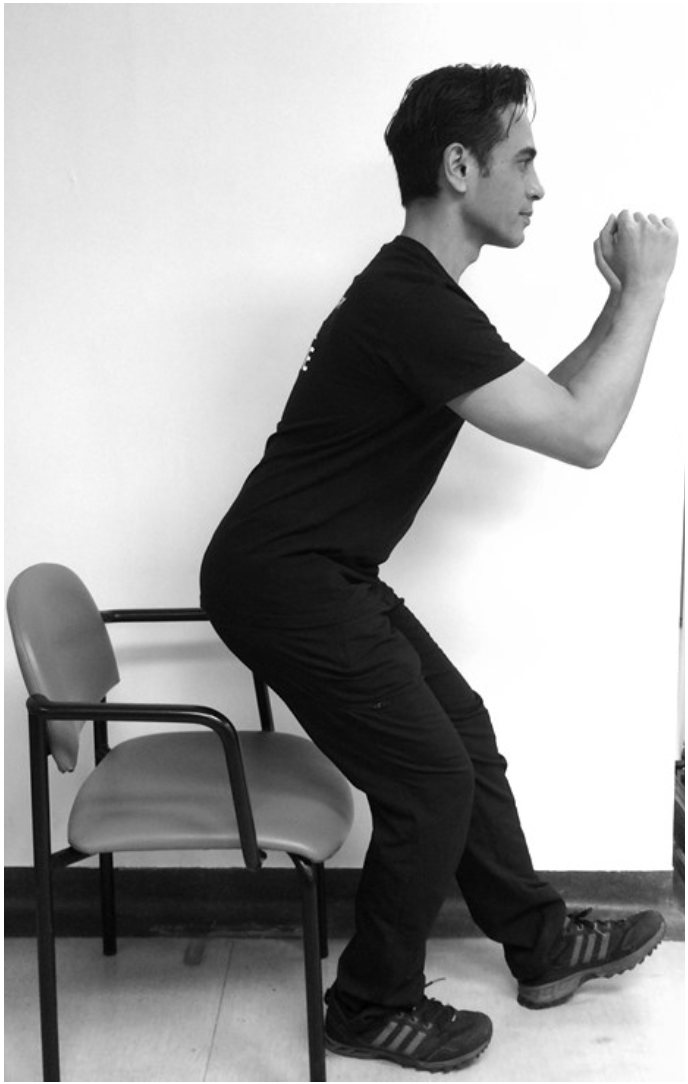
12. Crab walk
- Bring your feet together and tie a TheraBand® just above your knees
- Stand with feet shoulder distance apart
- Stick your buttocks out as if you are about to sit in a chair
- Do not allow your knees to go ahead of your toes
- Maintain this squat position and take a few steps in one direction, then side step back in the other direction
- When stepping feet back together, don’t bring feet closer than hip distance apart
- Repeat in opposite direction until you are back to your starting position
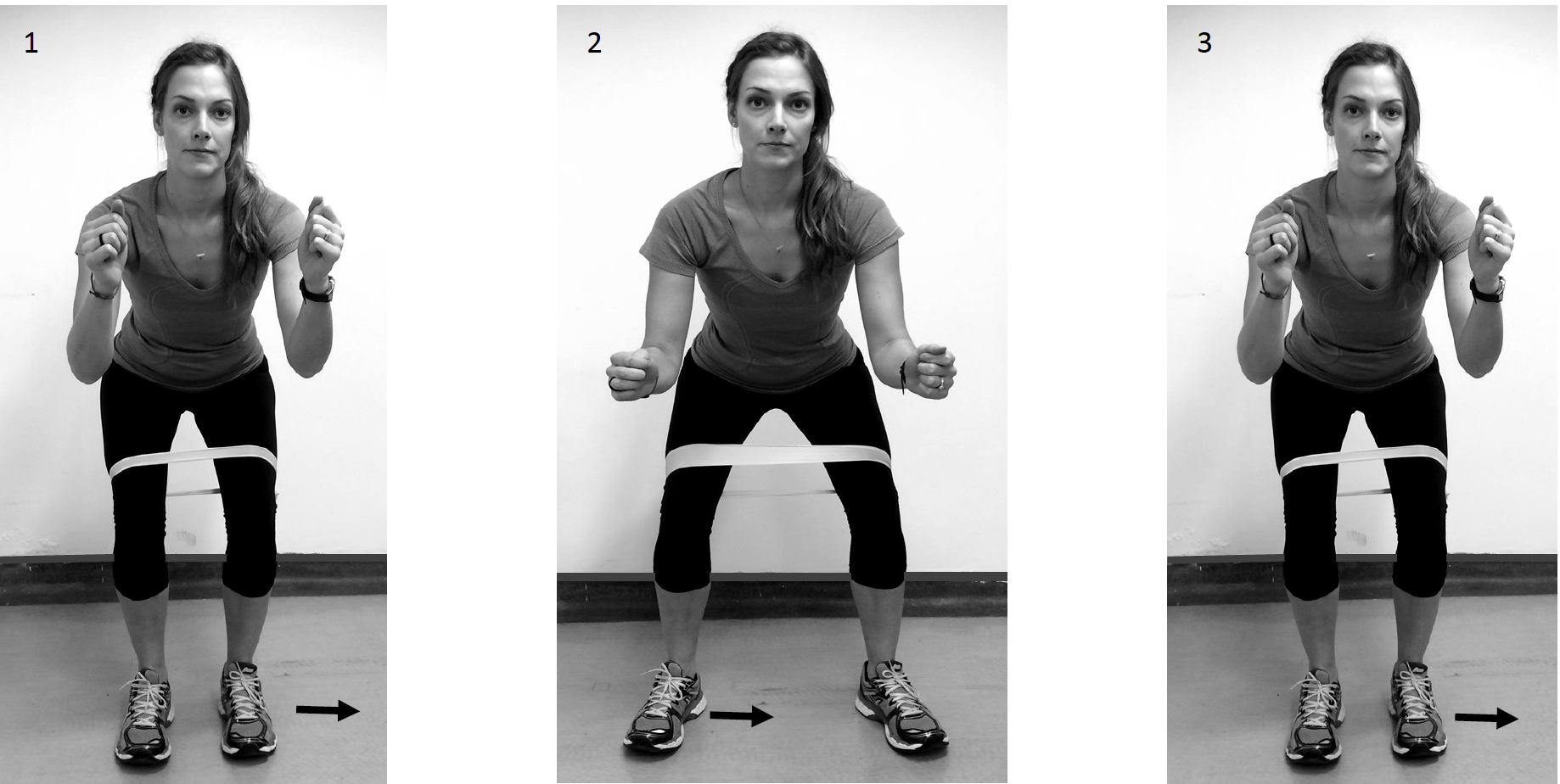
13. Standing abduction against wall
- Stand on operated leg
- Bend non-operated leg and push your knee against the wall and return to standing on both legs
- Your hip should not be touching the counter
- Make sure to keep your hips level and thighs in line
Progression: Try to take your hand off the counter so that your lower leg is the only part of your body touching the wall.
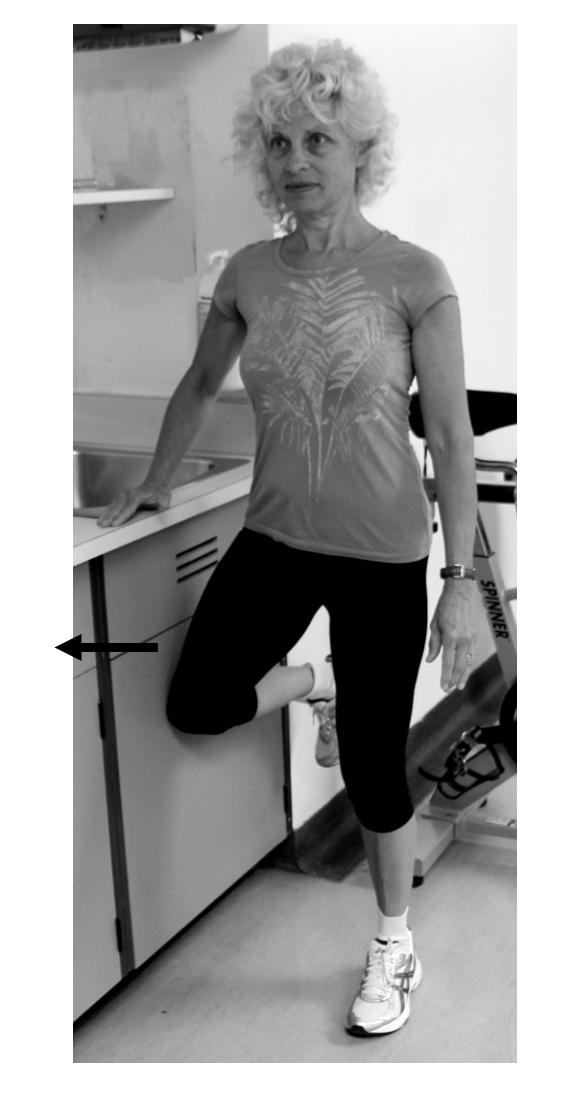
14. Marching in standing
- Hold onto a counter for support if needed
- Bend your operated hip and lift your knee up towards your chest
- Keep your back straight and ensure that you are not rocking from side to side
- Alternate legs
Helpful Tip: perform this exercise in front of a mirror.
Progression:
- level 1: Once you are able to stand without holding on, progress to marching at a slower pace
- level 2: Standing on an uneven surface such as a flat pillow, wobble board or Bosu® ball
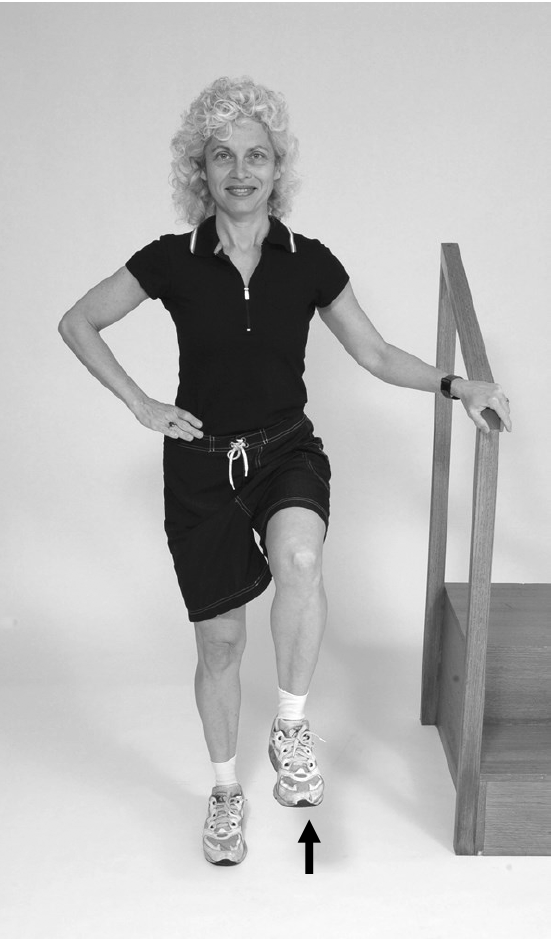
Stretches
- Warm up for 5-10 minutes before stretching (e.g walking, warm shower)
- Hold stretches 45 seconds (or 5 slow deep breaths), repeat 3 times
- Can be done everyday or several times a day if your muscles are tight
- Repeat with the other leg
Exercise instructions
15. Hip bending stretch
- Bend your knee and bring your operated leg toward your chest
-
When you cannot go any further on your own, use your hands/towel to pull your thigh towards your chest until you feel a gentle stretch
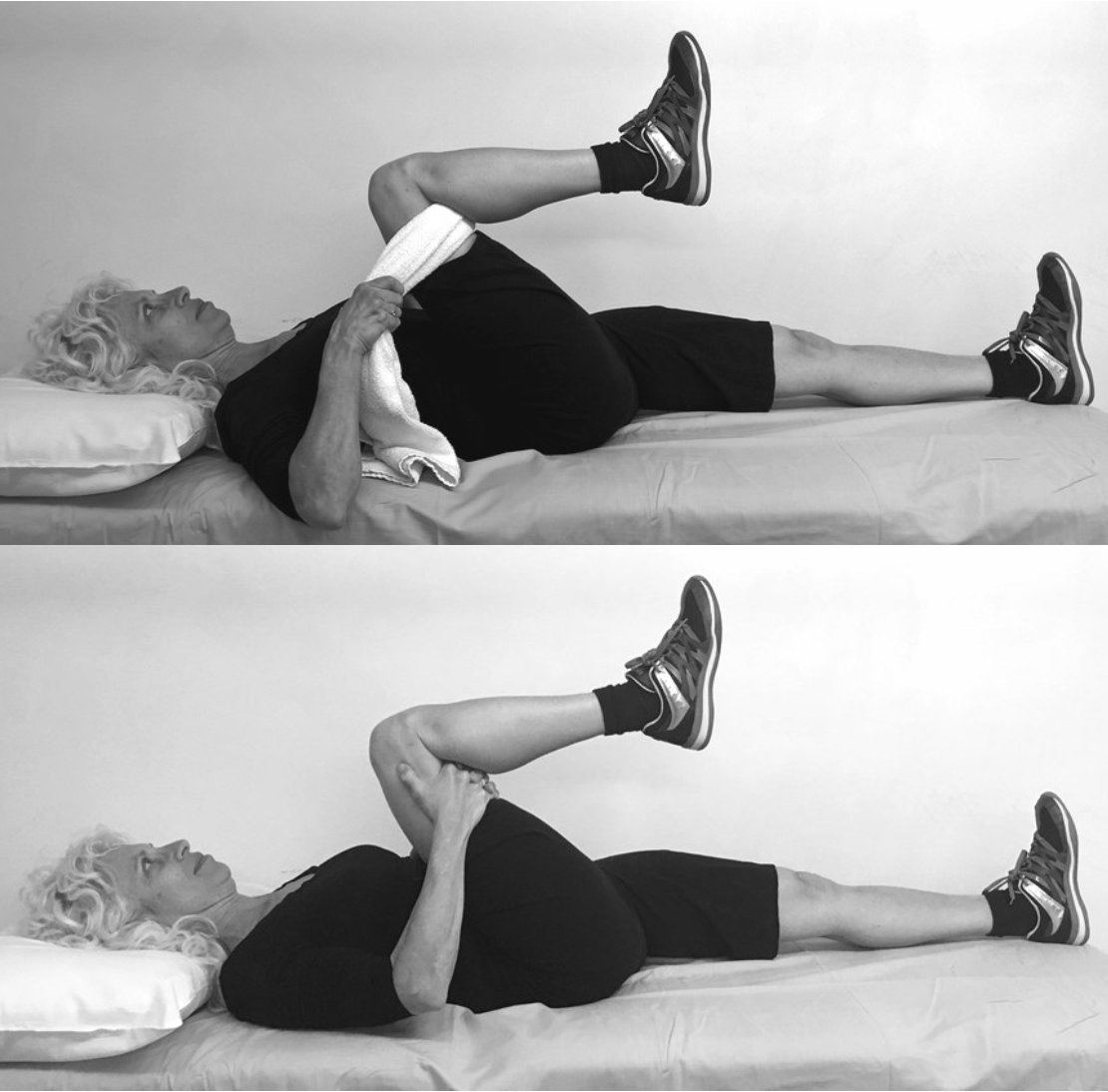
16. Hip flexor stretch
- Lie with operated leg hanging over the end of the bed
- Bend the non-operated leg toward your chest using your hands or a towel
- You should feel the stretch at the front of your thigh/groin
Note: to increase the stretch, let more of your thigh hang off the bed and bend your knee.
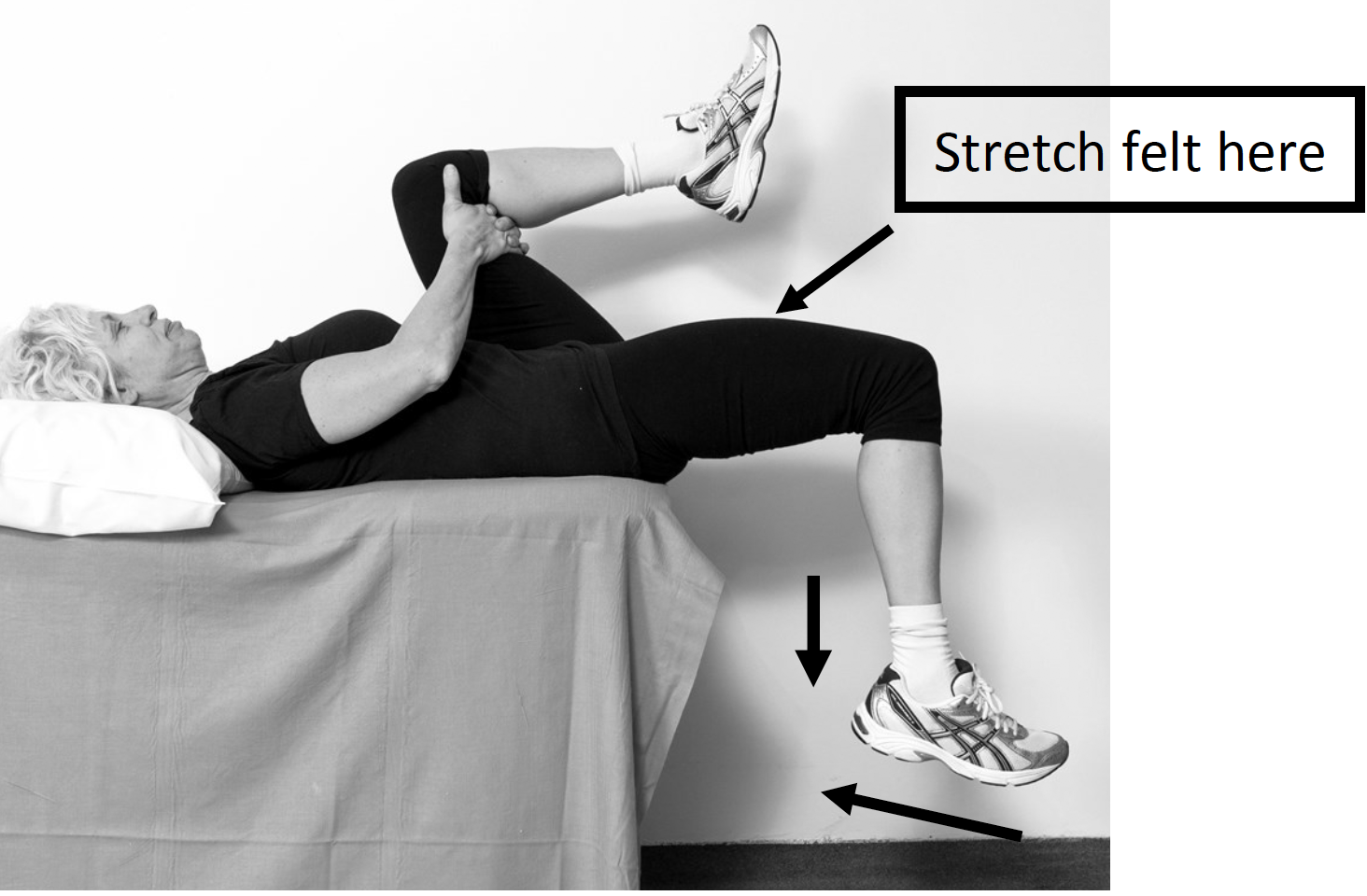
17. Seated hamstring stretch
- Sit on the edge of a chair
- Keep non-operated foot flat on floor. Straighten your operated leg with heel on floor and toes pointing up to the ceiling
- Ensure that you are sitting up straight with an arch in your low back
- Slowly lean forward at hips while maintaining a straight back with chest up

18. Adductor stretch
- Stand with your feet wider than hip distance apart
- Lunge away from the side that you are stretching
- You should feel the stretch in your groin or the inside of your thigh
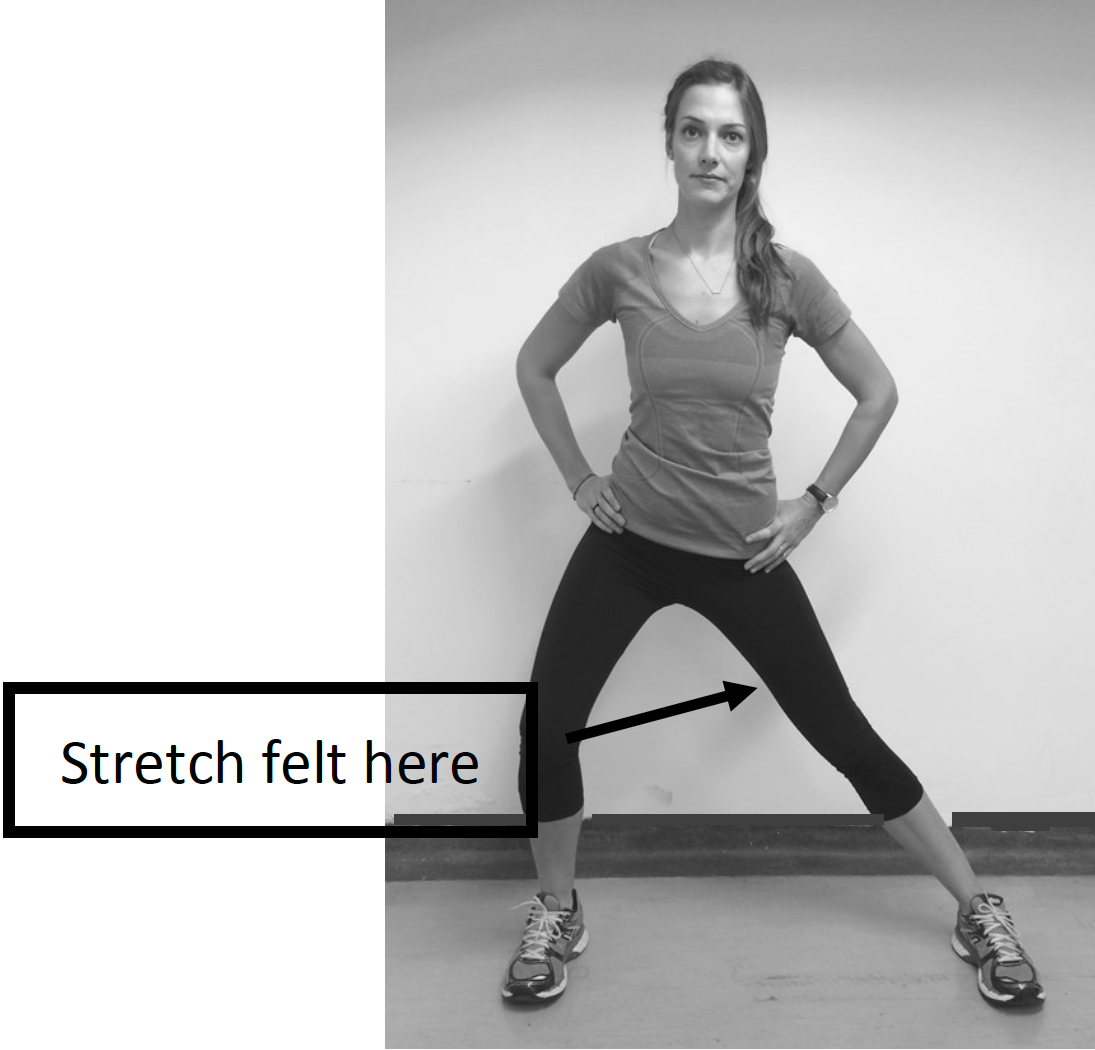
19. Side stretch
- In sitting or standing
- Raise the arm on your operated side above your head
- Lean away from your operated side
- Take 4 deep breaths to increase the stretch
